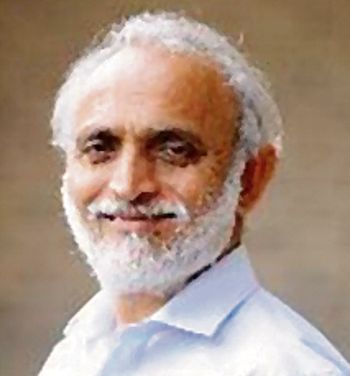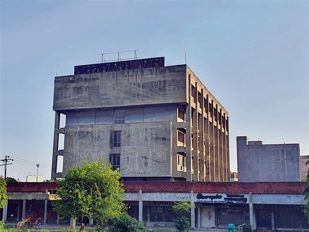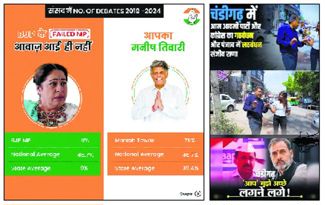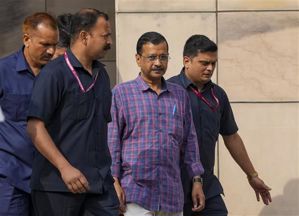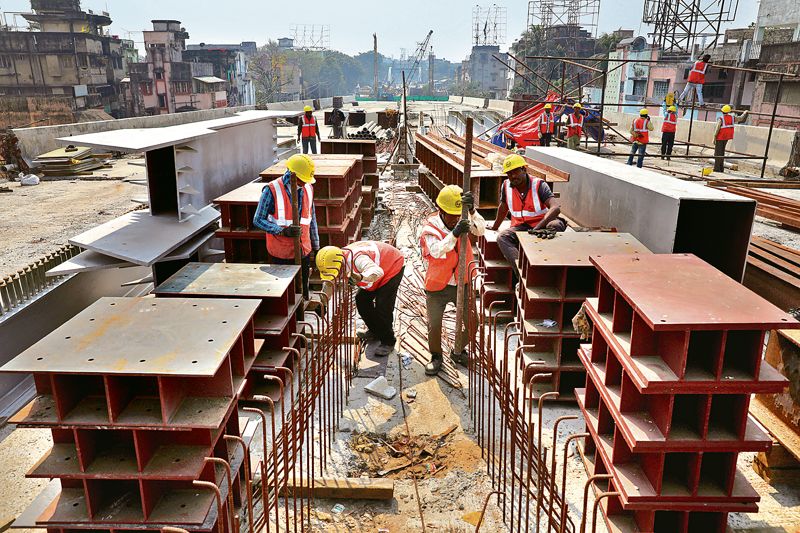
CHECK FINE PRINT: The incentives to boost growth sentiment may not be enough to spur a rebound in the economy. - File photo
Parsa Venkateshwar Rao Jr
Senior Journalist
THE economy is a given. The government and the Finance Minister can only work over it or work around it. It would then be futile to blame either Finance Minister Nirmala Sitharaman or Prime Minister Narendra Modi. The fact is that the economy shrank 6.6 per cent in 2020-21, according to the latest estimates — a matter of comfort to those in the government facing the challenge of Covid-19 — and it is estimated to grow at 9.2 per cent in 2021-22, which may be revised when the January-March data comes in May. The real growth figure for 2021-22 compared to the lower base of the previous year would be much smaller, that is about 3 per cent. And it is not the fault of the government that this is so. Whether the government speaks about it or not, the other economy-watchers cannot ignore this. That is why, many of the growth estimates show a correction in the 2022-23 estimates compared to that of 2021-22. A minor detail indeed, but it does not leave space for a robust rebound. The situation is not grim, but it is not buoyant either. Recovery from the pandemic stress will spread into 2023-24. The macro-economic fundamentals suggest that the economy can survive the stress test, which is good news. Similarly, the foreign exchange reserve of a robust $633.6 billion is enough to cover imports of 13 months. It is a safe perch. But the reserves are not indicative of a flood in foreign exchange earnings.
Given this background, Finance Minister Sitharaman has offered many incentives on the face of it to whip up growth sentiment as it were. But it is more in the realm of intent, determination and hope. In paragraph 10 of the Budget speech, the Finance Minister said, “The Productivity Linked Incentive in 14 sectors for achieving the vision of Atmanirbharta has received an excellent response, with potential to create 60 lakh new jobs and an additional production of Rs 30 lakh crore during the next five years.” Of course, the PLI initiative does not extend to the entire manufacturing sector, and it is targeted at certain segments like electronic hardware and pharmaceuticals. So the employment and the production value figures should be seen as referring to a small part. And it is to be assumed that the 60 lakh jobs demand is that of skilled labour force with educational qualifications ranging from a diploma to a research degree. The nitty-gritty must be worked at the ground level, and there is nothing much the policy czars at the ministerial and departmental levels can do about it.
Paragraph 9 of the speech has this sweeping declaration: “The strengthening of the health infrastructure, speedy implementation of the vaccination programme and the nation-wide resilient response to the current wave of the pandemic, are evident for all.” The picture is far from the rosy one that the statement suggests. The health infrastructure was under stress, and it did not break because the number of infections as well as cases of hospitalisation were far less, and the reasons for this are quite complex. So, if one is to believe that the health infrastructure is adequate, it would be an error. Similarly, the vaccination programme is a one-time exercise, and the system was stretched to achieve success. Most health workers and frontline workers were stressed to breaking point in dealing with the exigency. Of course, we do not expect the Finance Minister to explain the issues. But during the debate on the Budget, these details must be discussed and the government must reveal the data as honestly as it can.
It is in this context that the 25-year ‘Amrit Kaal’ perspective plan to be rolled out by 2047, marking 100 years of Independence, must be assessed. It would be churlish indeed to fault the Finance Minister and the Prime Minister for thinking of the developmental and growth goals for 2047. But this approach frankly belongs to the socialist era thinking, and to functioning communist nations such as China. As a matter of fact, Chinese President Xi Jinping has unveiled goals for 2049 to mark the centenary of the Red Revolution in China. When PM Modi dismantled the Planning Commission and set up the NITI Aayog, it seemed that he had put all this planning business behind him and wanted the country to follow the market path, where planning decisions are made by firms and individuals. Instead, the government is still stuck in the planning mode. It is a fact that India needs a multi-modal, seamless transport infrastructure but it should have emerged as and when the demand came up. By creating the infrastructure, you facilitate demand, but you do not create it. To say that the railways will set up one-station one-product is a case of planning from above, instead of letting the market work out the solution. All that the state should be doing is to expand roads, railways and waterways. Similarly, the plan to use drones for assessing crops and to connect the farmers with laboratories and extension workers is a bureaucratic approach.
Of course, it does reveal the ‘control freak’ mindset of the government. Technological and scientific breakthroughs that will power the next stage of economic growth cannot happen under governmental direction. India’s entrepreneurial energies cannot be unleashed under the government’s aegis.
This brings us back to the core challenge of the Indian economy. Why is the Indian private sector sitting out when the country is raring to surge forward? The captains of industry and business are likely to answer the lack of infrastructure, and the governmental rules. The government is indeed trying to make it easy for businesses to exit because that will likely improve the growth of the start-ups. Of course, it also requires the innovators and investors in the country to show greater daring than they have shown so far if India is to become the superpower which it so ardently desires to be.
Join Whatsapp Channel of The Tribune for latest updates.






